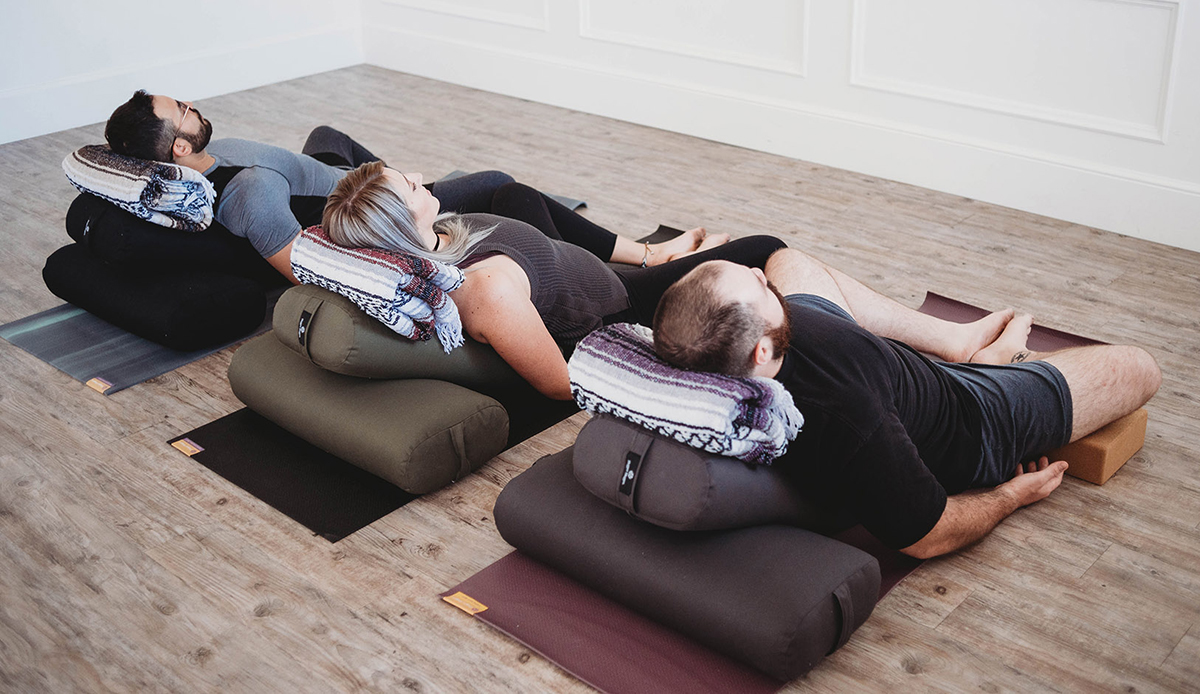
2020 is the “gift” that keeps on giving. It started with the rise of COVID in March. Even if you have stayed healthy, chances are the virus has upended your life in many ways. Now we’re navigating hurricane season and record-breaking wildfires on the West Coast. Just a few days ago, an unprecedented wind storm hit the Salt Lake valley and uprooted countless trees, causing damage in neighborhoods and parks all around the valley. And oh yeah, there was an earthquake here back in April. Fortunately, there are ways to maintain ballast even in the midst of seemingly constant upheaval. Mindful yoga practice can be our lifejacket on stormy seas.
Part of what makes events like these so disconcerting is that they remind us that we are powerless to control much of what happens in our lives. The onslaught of uncontrollable disasters is overwhelming and exhausting. But the truth is, even when our lives seem calm, change is still happening—every single moment. We just don’t notice it so much when our lives are rolling along undisturbed.
That is the grounding principle behind mindfulness meditation. When we stop and look deeply into our experience, we see the process of constant change in every single moment. Simply by observing our senses we can see for ourselves the constant arising and passing of sight, sound, taste, smell, touch and thought. We see that nothing stays the same—ever. Observing this moment-to-moment process of change helps us become more comfortable with the changes in our lives.
Sutra 1.2 in the yoga sutras of Patanjali says, “Yoga is the settling of the mind into silence.” (Alistair Shearer’s translation) This silence doesn’t depend on external or internal conditions. It is a silence that is intrinsic to all of us. It is the peaceful core of every being. While mindful yoga practice can’t help us control what happens in our lives, it can help us access this peaceful core.
Meditation and Mindful Yoga Practices
Here are some suggestions for creating a mindful yoga practice:
- Begin your practice by sitting quietly in a comfortable position. You can sit on a meditation cushion or even in a chair if you like.
- Settle back in your body, so that you are not leaning forward. This is a subtle, but powerful, adjustment. Leaning forward creates tension in the body. Settling back allows you to be more receptive to whatever is arising.
- Now feel the contact points in your body—your hips, legs and feet. Relax into your base. What else is happening in the body? Does your energy feel heavy or light, quick or slow, agitated or calm?
- Now open your sense of hearing. Are there sounds in your environment? If so, settle back and allow them to come and go naturally. Feel the vibration of sound throughout your body.
- Notice your breathing. Notice the rhythm, depth and the physical sensations associated with the expansion and release of the inhalation and exhalation.
- What is the landscape of the mind? Are thoughts present? Are emotions present? How is your mind reacting to what you are observing?
- Stay with this for at least 5 minutes. You can practice as long as you want.
Then practice mindful yoga from this same level of close observation. Below are some suggestions for grounding poses that might help calm your energy. Keep in mind that practicing from an aggressive, forceful intention will agitate your mind. For a more mindful yoga practice, keep your awareness inside the body, and be open to the moment-to-moment sensations as your poses unfold.
- Balance Poses: You can practice standing, seated or inverted balancing poses. These can help collect a scattered mind.
- Standing Poses: Like balancing poses, standing poses tend to ground the body-mind.
- Restorative Yoga: Restorative Yoga was literally developed with the intention to calm the nervous system. It is a staple of mindful yoga practice.
- Seated Forward Bends: Seated forward bends tend to calm the nervous system, as long as we approach them with patience and kind attention.
- Savasana: Don’t neglect your Savasana. It’s truly the most important pose in any yoga practice, but especially in a mindful yoga practice. Give yourself at least 15 minutes. That way your nervous system has enough time to transition into physiological relaxation. If you can do 20 minutes, even better.
We may not be able to control what happens in our lives. But through meditation and mindful yoga practice, we can access the steadfast and infinite peace that can guide us through even the most trying times.
